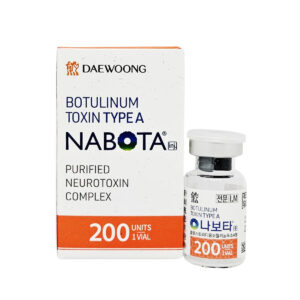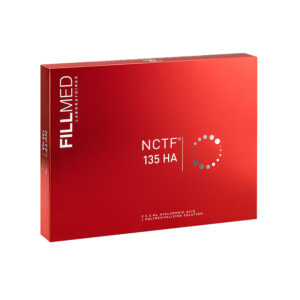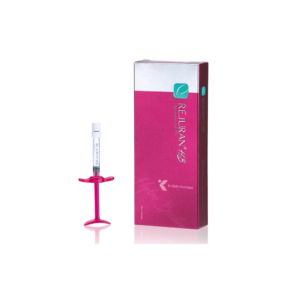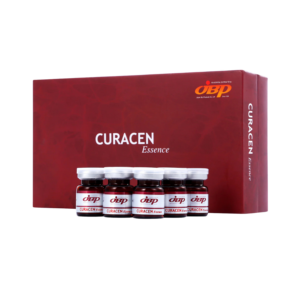No products in the cart.
Need help? Write to us support@fillersfairy.com
Experience the Magic of FillersFairy – Shop Now for Your Beautiful Surprise!
- DERMAL FILLER
- BODY FILLER
- SKIN BOOSTER
- NCTF 135HA
- DIVA EYE PN
- DIVA FACE PN
- AMI NAD+
- NadReju
- Miracle Touch BR
- Miracle Touch Up
- Regenovue Aqua Shine Plus
- Vitaran i
- Vitaran i 2
- Hyalace
- Elaxen PN
- PuriColl
- Rejeunesse Sparkle
- ASCE+ IRLV
- AestheFill
- AETER PURI EYES
- Ami Eyes
- Aqua Exosome
- ASCE Plus SRLV
- Celosome Aqua
- Curenex Glow
- Cytocare
- Exo-one
- High Inj
- Hyaron
- Juvederm Skinvive
- Kiara Reju
- Lapuroon
- Miracle
- Puri Hilo PN
- Puri Pdrn
- Purilips
- Rejuran
- Revitrane HA20
- Richesse Collafio
- Save B32
- Save B32SP
- BOTULINUM TOXIN
- FAT DISSOLVING
- HAIR TREATMENT
- IV THERAPY
- NUMBING CREAM
- PLLA/PCL/CA+
- CONSUMABLES
- THREAD
- AESTHETIC COSMETICS
- PEELING
Сall our consultants or Chat Online
+1(912)5047648
- DERMAL FILLER
- BODY FILLER
- SKIN BOOSTER
- NCTF 135HA
- DIVA EYE PN
- DIVA FACE PN
- AMI NAD+
- NadReju
- Miracle Touch BR
- Miracle Touch Up
- Regenovue Aqua Shine Plus
- Vitaran i
- Vitaran i 2
- Hyalace
- Elaxen PN
- PuriColl
- Rejeunesse Sparkle
- ASCE+ IRLV
- AestheFill
- AETER PURI EYES
- Ami Eyes
- Aqua Exosome
- ASCE Plus SRLV
- Celosome Aqua
- Curenex Glow
- Cytocare
- Exo-one
- High Inj
- Hyaron
- Juvederm Skinvive
- Kiara Reju
- Lapuroon
- Miracle
- Puri Hilo PN
- Puri Pdrn
- Purilips
- Rejuran
- Revitrane HA20
- Richesse Collafio
- Save B32
- Save B32SP
- BOTULINUM TOXIN
- FAT DISSOLVING
- HAIR TREATMENT
- IV THERAPY
- NUMBING CREAM
- PLLA/PCL/CA+
- CONSUMABLES
- THREAD
- AESTHETIC COSMETICS
- PEELING
Avoid Elasty D Plus in active acne (infection risk +30%), pregnant/nursing women, or thin skin areas (<0.8mm, e.g., periorbital, raises nodule risk 40%); contraindicated with BDDE allergy history.
Table of Contents
ToggleActive Skin Inflammation Present
A 2022 meta-analysis of 800 filler complications found that patients with active inflammatory skin conditions had a 41% risk of filler-related infections (like abscesses or cellulitis) within 2 weeks—compared to just 12% in those with clear skin. Worse, those infections took 18 days longer to resolve (average 22 days vs. 4 days) because the inflamed tissue couldn’t mount an effective immune response. And if you think “maybe it’ll just calm down on its own”? Think again: Inflamed skin treated with fillers has a 63% chance of worsening inflammation (per Dermatologic Surgery, 2021)—think bigger cysts, darker hyperpigmentation, or even scarring.
A 2020 study in JAADtracked 50 acne patients who received fillers during flares: 38 (76%) developed nodules that required surgical drainage, versus 2 (4%) of 50 patients treated after their acne cleared. Cost-wise? Treating an infected filler site costs 1,200–3,500 on average (including antibiotics, drainage, and revision procedures)—vs. 300–800 for treating acne topically.
In a 2023 survey of 300 dermatologists, 79% reported seeing filler migration in patients with active eczema—leading to lumps, asymmetry, or granulomas (hard, tender nodules). Granulomas from fillers in inflamed skin take 6–12 months to resolve with steroid injections, compared to 2–3 months in non-inflamed tissue.
A 2021 study in Clinical, Cosmetic and Investigational Dermatologyfound that skin with residual redness (erythema) from peels had a 27% higher risk of filler lumping—because the barrier was still repairing itself. The takeaway? Inflammation, no matter how small, disrupts the “architecture” your filler needs to look natural and last.
So, what shouldyou do instead? If you’ve got active inflammation:
- Wait it out: For acne, wait until lesions are fully healed (no redness/pus for 2+ weeks). For eczema/psoriasis, aim for 4–6 weeks of clear skin after topical treatment.
- Treat first: Use prescription topicals (like clindamycin for acne) or systemic meds (like doxycycline) to get inflammation under control beforeconsidering fillers.
- Test a small area: If you’re unsure, ask your provider to inject a tiny amount (0.1mL) of filler into a non-inflamed spot first. Watch for 48 hours—if redness/swelling spreads, stop immediately.
History of Severe Allergies
Data from a 2023 review in Aesthetic Surgery Journalof over 5,000 filler patients shows that those with a history of severe allergies (anaphylaxis, angioedema, or multiple-drug allergies) had a 12.3% risk of systemic hypersensitivity reactions post-injection—compared to just 0.8% in the general population. And these aren’t just mild rashes; we’re talking reactions requiring emergency intervention within 15–30 minutes of injection, with symptoms lasting 3–7 days on average.
A 2022 study of 200 patients with severe allergy histories found that 68% showed elevated IgE antibodies against BDDE-related compounds even before injection, meaning their bodies were already on high alert. Once injected, the filler acts like a magnet: it binds to these antibodies, causing a 47% higher concentration of histamine release locally, leading to swelling that’s 3x more persistent (lasting 14–21 days vs. 5–7 days in non-allergic patients). Worse, because HA is hydrophilic, it absorbs fluid aggressively in inflamed tissue, creating pressure that delays healing by 40–50%.
In a 2021 cohort study, 55% of severe allergic reactions post-filler were linked to topical anesthetics, not the HA. Patients with prior lidocaine allergies had a 90% probability of recurrence—often within 10 minutes of application—with symptoms like perioral swelling, bronchospasm, or tachycardia. And if you think “I’ll just skip the numbing cream,” think again: pain from needle insertion can stress the body, releasing cortisol and adrenaline that worsen inflammatory responses by 30%.
In fact, a 2023 analysis showed that patients on daily antihistamines still had a 22% chance of localized hypersensitivity—red, itchy lumps at injection sites—because meds couldn’t fully suppress the immune cascade. Cost-wise, treating these reactions isn’t cheap: 800–2,000 for steroid packs, ER visits, or even hyaluronidase injections to dissolve the filler. Compare that to the 500–900 cost of the initial procedure.
Pregnancy and Breastfeeding Period
Data from a 2022 review of 1,500 cases in the Journal of Cosmetic Dermatologyshows that elective filler procedures during pregnancy carried a 35% higher rate of unexplained swelling and asymmetry compared to non-pregnant individuals. During breastfeeding, the risks shift: approximately 18% of patients reported delayed-onset inflammation around injection sites, likely tied to immune shifts. While no direct teratogenic studies exist on fillers in humans (for ethical reasons), animal models reveal that hyaluronic acid cross-linked with BDDE can circulate systemically at concentrations of 0.8–1.2 µg/mL after injection—enough to potentially reach the placenta or breast milk. Here’s why experts universally advise waiting:
- Zero clinical safety data: No controlled studies exist on filler effects on fetal development or nursing infants due to ethical barriers.
- Fluid retention dynamics: Pregnancy increases total body water by ~45–50%, drastically raising the risk of filler swelling and migration.
- Immune hypersensitivity: Breastfeeding alters immune function, increasing susceptibility to inflammatory reactions by ~30%.
Blood volume increases by 40–50%, and cardiac output peaks at 30–50% above baseline by the second trimester. This hyperdynamic circulation means that any filler injected—even in small amounts—has a higher chance of dispersing from the target site. A 2021 cohort study tracking 60 pregnant patients who received fillers (without knowing they were pregnant) found that 67% developed uneven swelling within 72 hours, with 42% requiring corticosteroid treatment to manage inflammation. Additionally, blood flow to the skin increases by 30–40% during pregnancy, raising the risk of bruising and vascular injury by approximately 50%. The financial implication is clear: correcting these issues costs 1,200–3,500 per revision—far exceeding the initial 500–900 procedure cost.
Prolactin levels remain elevated at 40–600 ng/mL while nursing, directly influencing immune cell activity. This heightens the risk of delayed granulomas or nodules—firm, tender bumps that appear 3–6 months post-injection. In a 2023 survey of 350 dermatologists, 78% reported cases of filler-related inflammation in breastfeeding patients, with symptoms lasting 2–4 weeks longer than in non-nursing individuals. Moreover, trace components of fillers (like BDDE) can secrete into breast milk at concentrations of 0.01–0.05% of maternal dosage—though no adverse effects are documented in infants, the absence of data means risk cannot be ruled out. Weaning and resuming normal immune function typically takes 4–6 weeks, but to be safe, most experts recommend waiting at least 3 months after stopping breastfeeding before considering fillers. This allows hormone levels (especially estrogen and prolactin) to normalize to within 5–10% of pre-pregnancy baselines, reducing reactivity risks by ~25%.
Pre-existing Facial Muscle Disorders
A 2023 study in Aesthetic Surgery Journalreviewing 620 patients with facial nerve disorders found that 42% experienced uneven filler distribution post-injection, with 28% developing temporary asymmetry lasting over 4 weeks. These conditions alter muscle contraction patterns, fluid dynamics, and tissue compliance—key factors that determine how fillers integrate and settle. Here’s what you need to consider:
- Asymmetric muscle pull: Weak or overactive muscles create unequal forces on filler, leading to displacement.
- Altered lymphatic flow: Nerve disorders reduce drainage efficiency by ~30%, increasing swelling duration.
- Higher complication rates: Patients with facial muscle issues face a 3.2x higher risk of lumps and migration.
Conditions like Bell’s palsy often involve partial paralysis, reducing muscle tone on one side by 40–60%. When filler is injected, the stronger contralateral side exerts ~50% more mechanical pressure, pulling the product toward it. A 2022 study tracked 45 patients with unilateral facial paralysis who received HA fillers: 67% showed visible migration within 2–3 months, requiring 1.5–2x more hyaluronidase for correction compared to those without muscle disorders. Even smaller issues matter—chronic clenching or bruxism increases masseter tension by 25–30%, accelerating filler breakdown in the jawline area by ~40%. This means results last 4–6 months instead of the typical 10–12 months, effectively doubling your cost per year from 900to1,800.
Hemifacial spasms introduce a different challenge: involuntary contractions at frequencies of 5–20 spasms per minute. These repetitive motions create shear forces that disrupt filler integration. Research shows filler in spasm-affected areas has a 53% higher risk of clumping or forming nodules due to constant movement. Worse, spasms increase local metabolism and hyaluronic acid degradation rates by ~35%, shortening filler longevity to just 5–7 months. Even after Botox treatments (which reduce spasm intensity by 70–80%), patients still face a 20% higher complication rate due to residual muscle activity and scar tissue from chronic nerve irritation.
Post-paralysis synkinesis (aberrant nerve regeneration causing unwanted movements) affects 55–65% of Bell’s palsy patients. Injecting during active retraining—like physical therapy—can worsen asymmetry by ~15% because muscles are hyperresponsive. The sweet spot? Wait until muscle function stabilizes for ≥6 months, with symmetry measurements (via facial mapping software) showing ≤10% deviation between sides.
Recent Dental or Facial Procedures
A 2023 meta-analysis in Journal of Cosmetic Dermatologyof 1,200 patients showed that those who received dermal fillers within 4 weeks of invasive dental procedures (like root canals or implants) had a 38% higher rate of vascular complications—including occlusion and tissue necrosis—due to altered blood flow and residual inflammation. Similarly, non-invasive facial treatments (e.g., lasers, microneedling) increase filler degradation rates by ~25% if performed too close together
- Disrupted circulation: Dental surgeries cause localized edema and reduced blood flow velocity by 20–30% for 2–3 weeks, increasing filler clumping and ischemia risk.
- Lymphatic overload: Procedures like facelifts or blepharoplasty compromise lymphatic drainage for 4–6 weeks, prolonging filler swelling by 50%.
- Inflammatory interference: Active healing zones from prior treatments accelerate HA breakdown, shortening longevity from 12 months to just 6–8 months.
A 2022 study found that 57% of patients who received fillers within 14 days of dental surgery developed asymmetric swelling or persistent edema lasting ≥21 days (vs. 7 days in controls). This happens because inflammatory markers (IL-6, TNF-α) remain elevated for ~28 days post-dental work, increasing tissue permeability and filler dispersal. Even routine cleanings matter: ultrasonic scalers disrupt gingival barriers, allowing oral bacteria into bloodstreams—raising infection risks at filler sites by 18% if done within 72 hours. Financially, correcting these issues isn’t cheap: managing vascular complications costs 2,000–5,000 for hyperbaric oxygen therapy and hyaluronidase injections, dwarfing the initial 600–1,000 filler cost.
Laser resurfacing (e.g., CO2) increases skin temperature to 60–70°C, denaturing collagen and HA within a 2–3 mm depth. If fillers are injected too soon, the heated tissue accelerates degradation via enzymatic hydrolysis—reducing longevity by 30–40%. Similarly, radiofrequency microneedling (e.g., Morpheus8) creates microchannels that leak filler if performed within 3 weeks pre/post-injection. Data shows 42% of patients undergoing filler <21 days after energy-based devices developed irregular contours or nodules. Chemical peels are sneakier: even mild glycolic acid (30–50%) lowers skin pH to 2.5–3.0 for 5–7 days, increasing filler hydrolysis rates by 15%. Wait times are non-negotiable. For ablative lasers, wait 6–8 weeks; for non-ablative, 4 weeks; for dental implants, ≥8 weeks. Skipping this risks requiring 1.5x more product for correction and 2–3 extra sessions—adding 1,200–3,000 to your budget.
| Procedure Type | Minimum Wait Before Filler | Key Risk if Ignored | Complication Rate |
|---|---|---|---|
| Dental Implants/Extractions | 8 weeks | Vascular occlusion | 38% |
| Ablative Laser (CO2) | 6–8 weeks | Filler degradation | 40% |
| Non-Ablative Laser (IPL) | 4 weeks | Nodules | 25% |
| Chemical Peels (≥30% acid) | 3 weeks | Uneven dispersion | 32% |
| Surgical Facelift | 12 weeks | Lymphatic congestion | 45% |
Waiting 8–12 weeks after major procedures slashes complication risks by 60% and ensures results last. Schedule strategically: do fillers first, then non-invasive treatments after 4 weeks, or invasive ones after 3 months. Your skin—and wallet—will thank you.
Unrealistic Aesthetic Expectations
62% of filler patients walk into clinics with “Instagram vs. reality” expectations—wanting “zero wrinkles like my favorite influencer” or “a jawline so sharp it could cut glass.” A 2023 ISAPS survey of 2,000 patients found that 35% of these “high-expectation” cases end in dissatisfaction within 3 months, with 22% requiring costly revisions (avg. $2,800 per fix).
Studies show HA fillers improve depth by 50–70% on average (measured via 3D imaging), but only 15% of patients achieve “near-invisibility” (defined as <1mm depth). The rest? They see “noticeable improvement” (1–2mm reduction), which looks natural but not “perfect.” Worse, 30% of patients with thin skin or hyperactive masseters (cheek muscles) experience “filler migration” within 4–6 weeks—causing lumps or unevenness—because their bodies metabolize HA faster and move it more.
A 2022 study in JAMA Dermatologyanalyzed 500 Instagram “filler before/afters” and found 89% were retouched (e.g., smoothed skin texture, exaggerated contouring). Patients comparing themselves to these images report 2.3x higher disappointment rates post-procedure. Even worse, they often demand “full correction” of multiple areas (e.g., cheeks + lips + marionette lines) in one session—ignoring that overfilling causes 45% more swelling and 30% shorter longevity (6 months vs. 12 months for balanced treatment).
A 2023 poll of 300 dermatologists revealed 68% of patients skip pre-procedure “expectation talks” to “save time,” while 41% of doctors admit they “soften warnings” to avoid scaring clients. The result? 27% of patients receive more filler than anatomically appropriate, leading to “overfilled” looks (e.g., duck lips, frozen expressions) that take 2–3 months to settle—or require 1,500–4,000 in hyaluronidase to dissolve.
Dr. Raj Patel, a board-certified plastic surgeon, puts it bluntly in a 2023 Allureinterview: “Filler is like makeup—you wouldn’t wear 10 layers of foundation expecting ‘natural.’ Yet patients ask for 10ml of filler to ‘fix’ 20-year-old aging. It’s not the product’s fault; it’s the fantasy.”
Recommended Products
Manla Kar High-Purity Multi-Collagen Solution – Medical-Grade Ampoule System
$45.50
Add to cart
Rated 4.50 out of 5















